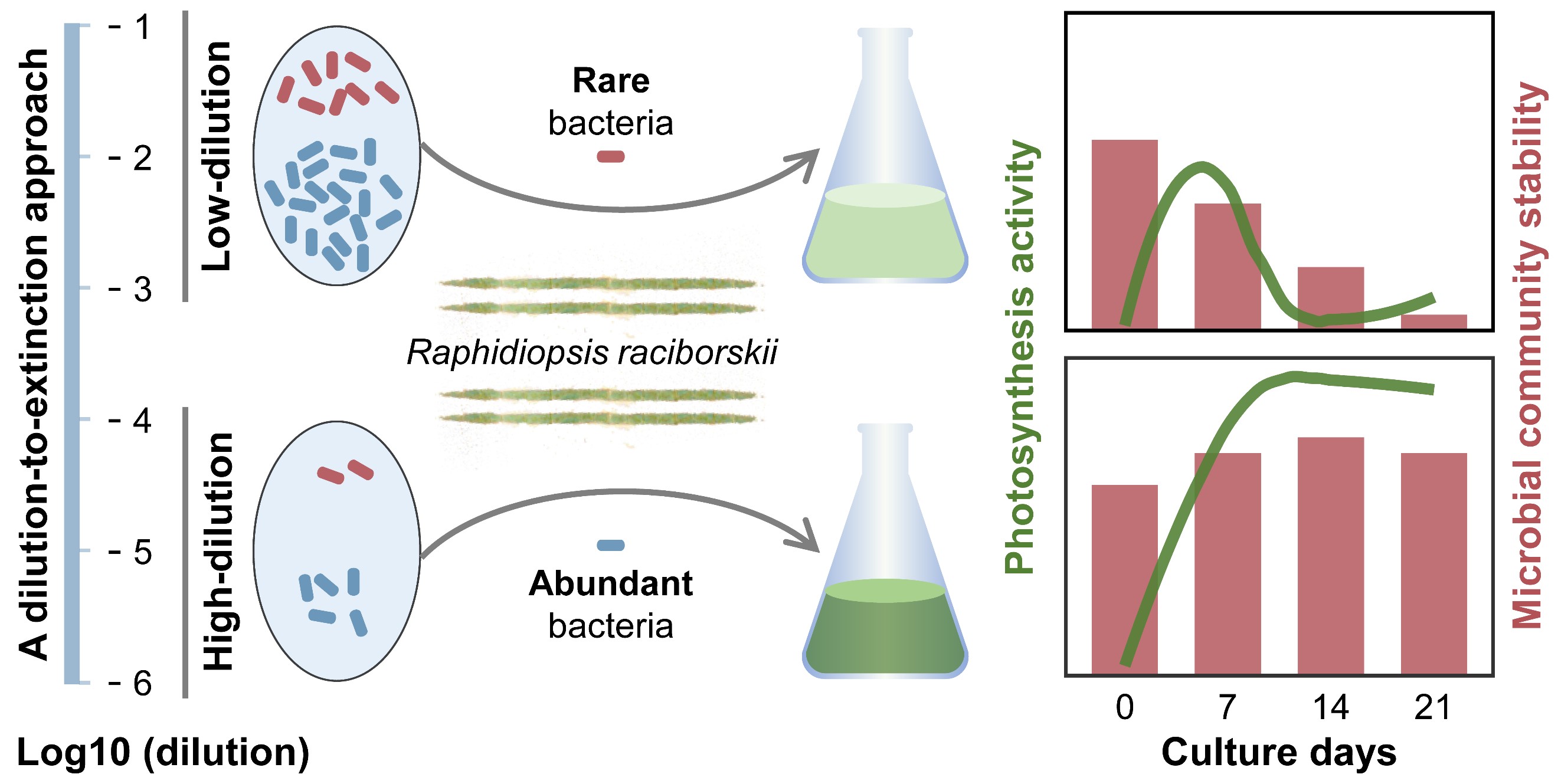The increasing frequency, worldwide spatial expansion and toxicity of Raphidiopsis raciborskii blooms call for information on the mechanisms behind its formation and disappearance.
Moreover, in deep lakes and reservoirs around the world, Raphidiopsis raciborskii exhibits a more invasive and expansive trend, and following Microcystis, has become to the first cyanobacterial blooms which threatens aquatic ecosystems. In southeast part of China,R. raciborskii can produce cylindrospermopsin (CYN), which is the second most common cyanotoxin around the world.
Nowadays, R. raciborskii blooms and their associated ecological issues have been the main topics for Algologist, Ecologist and administrative government.
Deciphering the interactions between heterotrophic bacteria and phytoplankton such as cyanobacteria is vital for understanding microbe-driven aquatic ecosystem processes and functions, including mass bloom development and toxicity. Currently, abundant bacterial species are of primary concern, while the role of more diverse and copious rare species (dark matter) are often ignored, therefore the interaction relationship between rare species and R. raciborskii remains unknown.
The research group (Aquatic EcoHealth Group, Institute of Urban Environment, Chinese Academy of Sciences) led by Prof.YANG Jun chose the R. raciborskii isolated from Xiamen city. Using a dilution-to-extinction approach (10, 100, 1000, 10000, 100000, 1000000-fold dilution), rare bacterial species from reservoir water were co-cultured with the bloom-forming cyanobacterium R. raciborskii in the lab to explore their interactions by using Phyto-PAM and 16S rRNA gene high-throughput sequencing.
They found that a <10000-fold bacterial dilution led to bacteria control of growth and photosynthesis of R. raciborskii. Moreover, the bacterial community compositions in the low-dilution groups (i.e. 10-, 100-, and 1000-fold) were clearly separated from the high-dilution groups (i.e. 10000-, 100000-, 1000000-fold). Importantly, in the low-dilution groups rare species changed dramatically, and the network complexity and compositional stability of bacterial communities decreased, indicating many rare species were highly active. Collectively, their results suggest that rare bacterial species inhibit R. raciborskii growth and photosynthesis through microbial interactions mediated by species coexistence mechanisms.
The novel aspects of this study are: (1) A key dilution threshold for rare bacterial species is identified, and the growth of R. raciborskii is significantly inhibited at this or lower dilution level. (2) The rare bacterial species are proved to control the R. raciborskii growth and photosynthesis using a dilution-to-extinction in the lab culture experiments. (3) They hypothesize a mechanism that rare bacterial species can thrive and turn to highly active through species coexistence mechanisms, for serving their ecological functions. Their study provides new knowledge of the ecological role of rare bacteria and offers new perspectives for understanding the outbreak and expansion of Raphidiopsis blooms.
The research entitled Interaction between Raphidiopsis raciborskii and rare bacterial species revealed by dilution-to-extinction experiments was published in an international journal Harmful Algae (Harmful Algae, 2022, 120: 102350). Dr. Jun Zuo and Dr. YANG Jun are the first and corresponding authors, respectively. The research was funded by the National Science Foundation of China, the Natural Science Foundation of Fujian Province of China, the “Fujian STS” Program of the Chinese Academy of Sciences and the Fujian Provincial Department of Ecology and Environment.

Interaction between Raphidiopsis raciborskii and rare bacterial species